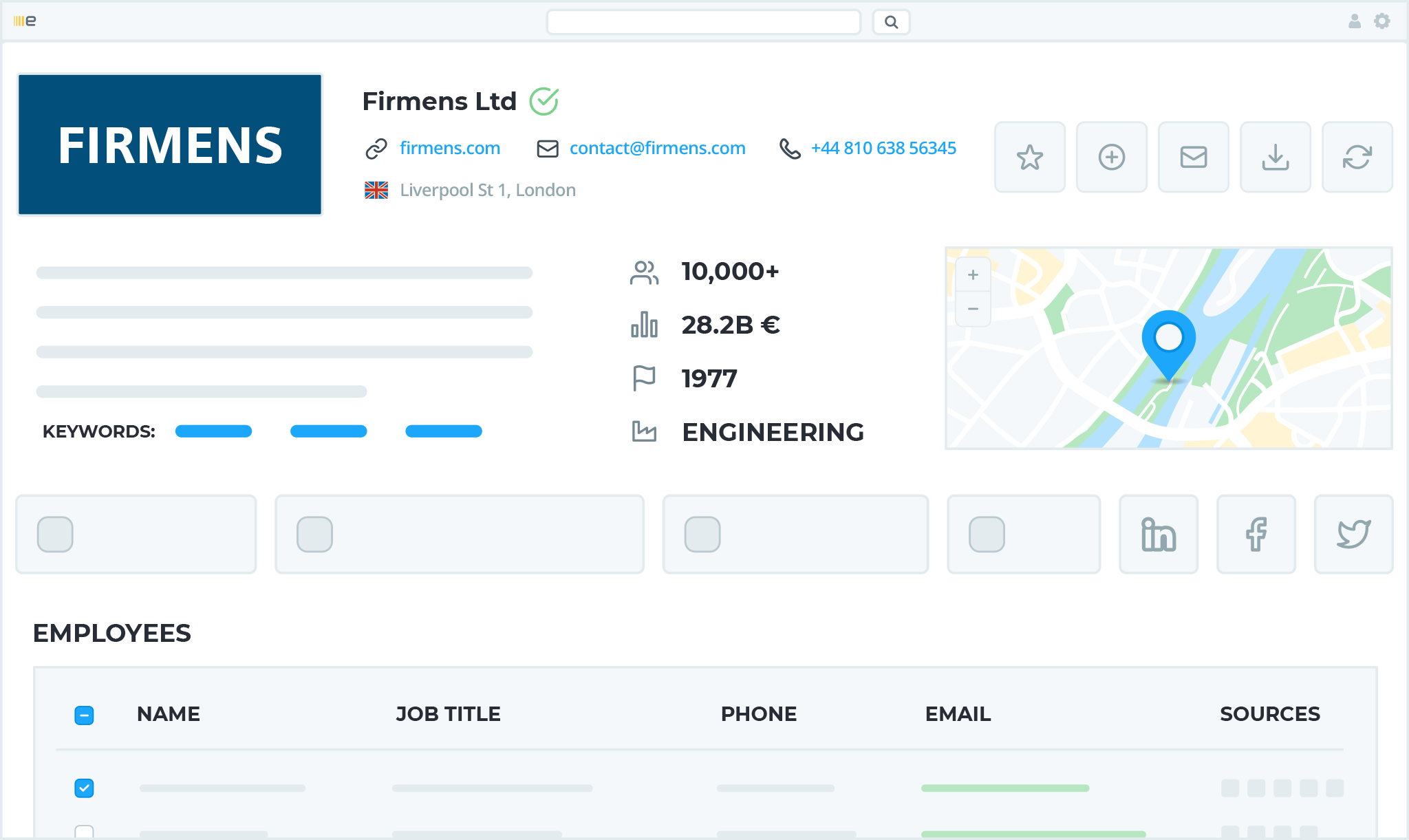As a sales professional, you know that emailing your B2B prospects is a key part of your sales strategy. You use email every day to reach out to, respond to and follow up with your prospects. Although email is an efficient way to communicate, it does come with a few challenges.
Please note: Since cold emailing or mass mailing are prohibited in D-A-CH countries, we are only referring to emails you use at a further stage of the sales process.
For example, are you constantly struggling to get a response from prospects when you reach out after a cold call through email?
Are you unsure of how to write convincing newsletters, product announcements or invitations for events via email?
Or, do you struggle with how to be clever and persuasive in your sales emails?
Hope is not lost! There are still plenty of reasons to continue using email as a sales strategy. Here are a few email statistics that you should know as a sales professionals:
- Emails can determine your close rate. How and when you decide to email your prospects can help you close a deal with your prospect. Alternatively, this could drive your prospect away if you aren’t mailing them at the right time with the right information.
- It can affect your customers’ experiences. Starting a relationship off on the right foot with your customer–also through follow up-emails is vital to how they will view their entire experience with your company. Plus, if all goes well, this can set the stage for a long, profitable relationship.
Email marketing and sales activities are not going away any time soon. But, the good news is there are a few ways you can keep your emails engaging.
How to Make B2B Prospects Open Your Sales Email
First, you need to make sure, prospects OPEN your sales email. Your email can be pure gold but have no effect at all when your target audience moves it directly to the trash—or even thinks its spam.
1. Grab Attention with Your Subject Line (and First Sentence)
The subject line (and the first sentence of your email) is typically the first thing your prospect or customer will see when receiving an email from you.
Our number one tip is to keep your subject lines short and enticing. The goal of your subject line is to create interest and wonder, so your prospect is compelled to open your email to find out more. Avoid sounding too sales-y as that is the quickest way for your prospect to hit “delete.” Try to be individual! Address very specific matters so you are building up trust with your prospect right at the beginning.
Here are a few examples of subject lines that work:
Question about [insert your prospect’s goal or pain point]
[Mutual connection] recommended we connect
XX tips/ideas to solve [insert pain point]
Can I make your life 25 percent easier?
About 33 percent of email recipients open emails based on the subject line alone. The subject line is arguably one of the most important elements of your sales and marketing emails. If you are looking to reduce your risk of getting flagged by spam or simply deleted, make sure your subject lines are relevant and relate to the content in the email.
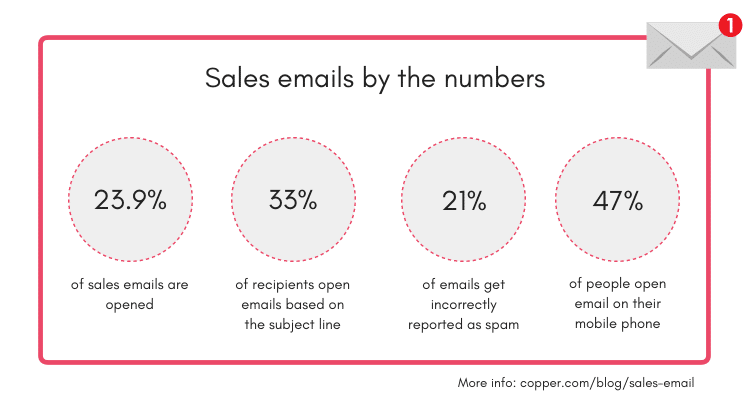
Source: www.copper.com
2. Ensure that Your Email Address is Reliable, Safe and Branded with Your Company’s Domain Name
This advice could go without stating but ensure that the email address you are sending your B2B sales emails from is professional and branded with your company’s domain name. Making sure your email address appears professional and reliable will increase the chances that your prospect will open and even respond to your email.
Your prospects need to trust you as a sender to open, read and even respond to your sales email. Here are a few tips on ensuring that your email address appears reliable and safe:
Avoid using free webmail addresses. For example, those could be a Gmail, Outlook, Yahoo, address etc. Instead, use an email address that is registered with your company’s domain name. Not only will this make you appear more reliable, but it will help with brand recognition.
Avoid using “no-reply” addresses. As the name implies, this could be misleading for your prospect when they receive, and email and they could quickly just hit “delete”. The main goal of your B2B sales emails is to get a reply and open the door to conversation with your prospect.
Match the “From” with your email address. It’s best to make sure your From name and email address are a match. When these two are different, it can confuse those who are receiving your emails because they could be unsure of who they are really talking to. By taking this important step, you’ll be able to develop a real connection by showing you are a real person on the other end of the email.
3. Follow-up Emails Should Have a Touch of “Have You Received my Email from Two Days Ago?”
If you find yourself sending multiple emails to your prospects and receive very few or no responses at all, you might want to consider how to structure your follow-up email to finally get a response from your prospect.
Follow-up emails are a vital part of your strategy and if you aren’t including that into your day-to-day routine, you might want to reconsider. Follow-up emails have a higher response rate, with the first follow-up email resulting in a 40%-increase in reply rates compared to your first email.
Here are a few tips on how to create the perfect follow-up email that could get you that much-deserved response:
Always start with a fresh email. It might be tempting to just “reply-all” to your latest communication to show the message thread, but this isn’t a great strategy. You will want to treat each follow-up as a blank slate with your prospect. This is the perfect time to test new subject lines, message format, call to actions, and perhaps jokes or memes.
Don’t follow-up too quickly. Persistence is one of the greatest qualities of good salespeople, but, there following-up from your sales emails will require a little bit of patience. Your prospect is busy with their day-to-day workload and probably especially busy managing that pain point you are trying to solve for. Best practice for following up on your emails is to wait three days after your last send.
The follow-up email is an important step in the process, but it requires patience and strategy. Although it can be frustrating to not receive any messages back, be patient and keep adjusting your email and you might be surprised that by your third or fourth follow-up, your prospect is ready to buy your solution.
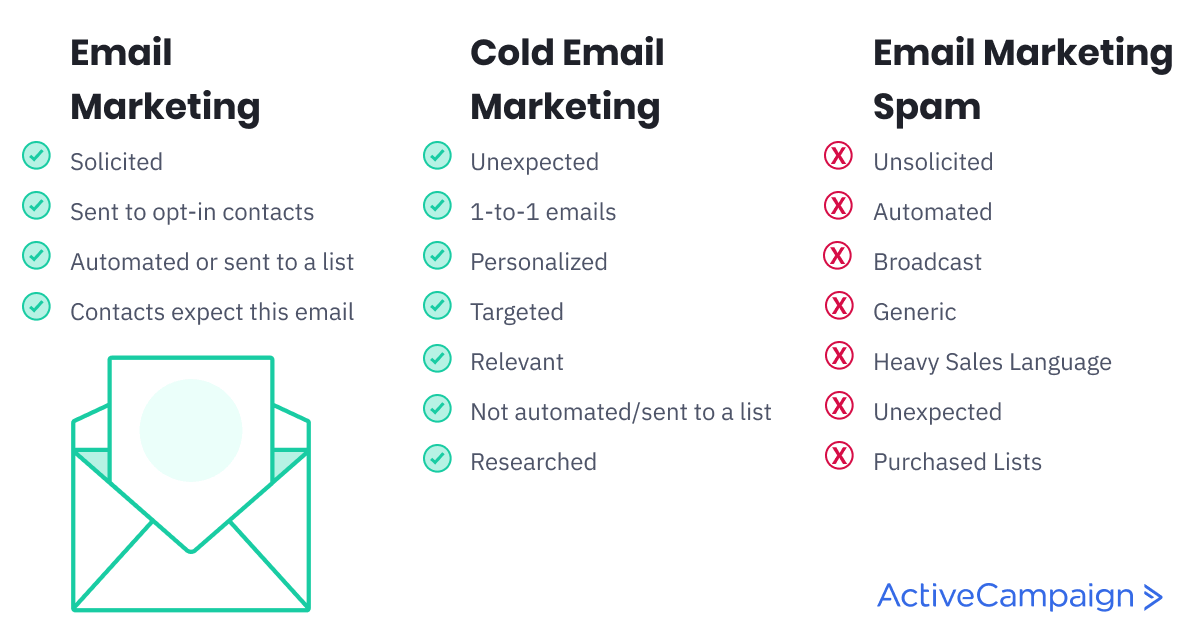
Source: www.activecampaign.com
Top 5 Elements of Great Sales Emails for B2B Prospects (That They Will Want to Respond to)
We know it can be frustrating when you spend your precious time crafting and sending—what you think is the perfect sales email—and you never hear back from your prospect or client. We’ve compiled a list of the top five elements of great B2B sales emails that will increase your response rate.
1. Keep Your Email Short and Sweet
Have you ever opened an email only to realize it is too long so you just hit “delete?” (it’s ok, we won’t tell your boss that you aren’t reading their long emails). Your prospect does not want to read long emails, either. Keep your email’s body copy short, sweet and to the point.
Your body copy should convey the value of your business, product or solution that is going to help solve your prospects’ problems or challenges. Avoid simply copy and pasting your company's value proposition and statements into your messaging. Instead, try to ask questions or pose interesting facts that will keep your prospect interested.
Here are a few examples of how you can start your email to keep your prospect engaged:
- Is there anything you would like to do to improve your company’s strategy?
- Is [benefit your company could provide your prospect] a priority for you at this time?
- Congratulations on your [new role, promotion, sales win, etc.]
- I noticed that [insert prospect’s problem] and I know a way to help.
Emailing your prospect is not the time to copy and paste a generic elevator pitch that might be inauthentic to your voice. Instead, it’s an opportunity to quickly connect and provide immediate value to your potential new customer. After all, personalized emails can result in 14 percent more click-throughs. So spending an extra few minutes personalizing your email will be worth it.
No idea how to personalize your email? With Dealfront you will get relevant news and trigger events about a company or contact directly into your email inbox! Find out how that works here.
2. Include a Call to Action (or Natural Next Step)
You can write the best subject line and email body copy, but if you neglect your closing and forget to include a call to action then your hard work will be a waste.
The closing of your email is important and it can prove to be one of the most difficult parts of the email draft. If you feel stuck on what to do for your sales email closings, consider the context of the email and what you actually want the prospect to do after reading.
Here are a few examples to help you get started:
Should I put some time on our calendar to discuss [issue, solution, need, etc.] further?
Let me know what makes sense for you and what the next steps are.
Do you have any more questions I can clear up?
Let me know if [business goal] is a priority for you now or if this is a future goal you would like to discuss at a later date.
After you provide a next step for your prospect to take, don’t forget to include your signature. Your signature should not be distracting or take any attention away from the real purpose of the email. The best formula for a signature is your name, position, the name of your company, a phone number, email and links to your company’s social media channels and website. Avoid images and quotes as they can be distracting and spamm-y.
3. Personalization is KEY!
Do not underestimate the power of personalization. When people receive personalized content, it makes them feel special and like you spent the time to personalize their message. There are statistics to back up the power of personalization:
- Personalized emails improve an email’s click-through rate by 14 percent and conversion rates by 10 percent.
- Personalized email campaigns produce 20 percent more sales opportunities compared to non-personalized emails.
- Personalized calls to action result in a 42 percent higher conversion rate compared to generic calls to action.
- 31 percent of consumers are more likely to make a purchase if their content is personalized.
Personalized emails are one of the most powerful ways to increase your chances of receiving a response. If you don’t know where to start with personalization, try these easy adjustments to get started:
- Use your prospect’s name in the email or even in the subject line.
- Personalize around the buyer persona, meaning, tailor your content around their pain points and the benefits your prospect will realize when purchasing your product or solution—trigger events come in handy at this point. If you use a sales intelligence tool, it will show you important events (e.g. expansion, change in management, new office) on which you can build your email
- Personalize by adding a compliment to your email. For example, you could say that you are impressed with your prospects marketing efforts or that you recently read a press release about a strategic new hire or acquisition.
- Personalize around what you know about their existing technology stack, personnel, current topics and more—have a look at a prospect’s website to find out more!
Once you practice personalization in your emails, it will get easier every time and you’ll enjoy more responses from interested prospects.
4. Drop the Formality
Your sales emails aren’t the time to be really formal. You’ll want to catch your prospects' attention with your personalization and your ability to get right to the point of why you are reaching out. Your prospect will not be impressed by your formal structure and writing, instead, they will remember that witty comment or the mention of their favorite restaurant.
A formally written email is more likely to be deleted. Conversational and casual writing is the latest trend in prospecting emails. These conversational and low-key emails are more likely to put your prospect at ease and help you as you start to build that important relationship.
Tip: If you know that the person or company you’re writing to also likes it a bit more casual, you can also try and attach a funny GIF or Meme to your email.
5. Use Social Proof
Social proof is the secret weapon in B2B sales and marketing. If you already have a bunch of happy customers loving your product, there is no better way to make you prospects believe you, than reading about your customers’ success stories.
Success stories or quotes make your offer not only more convincing but also more serious and valid aka. less spammy. Try to include social proof in your sales emails in your email signature. If you don’t want to “brag” with companies praising your solution right away, you could also design a signature with a link to your Capterra or G2 page—it’s always a good sign to lead to such platforms; it means you have nothing to hide.
If you also have a page with customers success stories, that also might be worth a try.
Avoid These Common B2B Prospecting Email Mistakes
Without even realizing it, you might be making sales email mistakes which could be resulting in low click rates and close to no replies. Or, if you’ve been having decent success with your email outreach strategy, it’s always good to refresh on some of these common mistakes to ensure your emails are top-notch and convert your B2B leads and prospects into real customers.
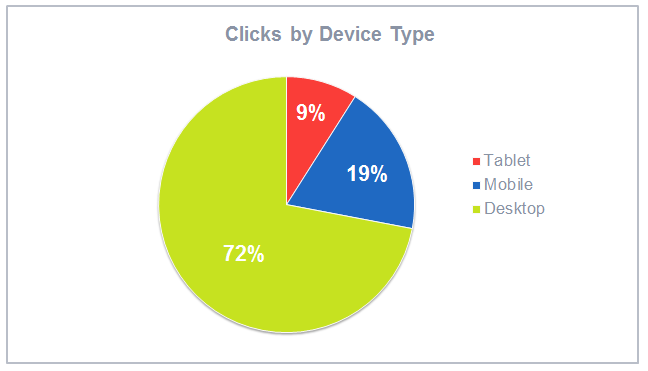
Source: www.superoffice.com
Read and Then Reread Your Email Before Hitting Send
One of the biggest mistakes is sending your email before proofreading it. Additionally, if you are spending a lot of time drafting a personalized email, you want to make sure you are sending it to the right contact. Here are a few things to look out for when you are proofreading your sales emails:
Make sure everything is spelled correctly.
Follow good grammar rules.
Ensure you’ve spelled your prospect’s name correctly.
Double-check your prospect’s company name and what you are offering.
Look at who you are intending to send your email to and make sure it is the right email address.
By taking an extra minute to re-read your email before hitting send, you can avoid making the mistake of error-riddled emails which could result in your prospect just hitting “delete.”
Burying (or Simply Not Including) Your Ask
Your emails to your B2B prospects should serve a purpose. Whether you are looking for your prospect to schedule a meeting or click through to your website to make a purchase, there should be a clear objective in the email. It’s important to be as clear as possible in your email communications with your prospect so they aren’t confused by your message.
However, there is a fine line that you don’t want to cross. If you provide too many calls to action or conflicting calls to action, it might confuse or overwhelm your prospect. Provide your prospect with one, natural call to action that aligns with the context of your email.
Avoid Copying and Pasting (or Remember to Re-format)
Have you ever received an email that was clearly put together with copy and pasted information? If you’re unsure of what we mean, one of the most common signs is that one paragraph's font, size, or color might be slightly (or obviously) different from the other copy in the email.
This common mistake happens when information is copied and pasted into an email without removing the formatting. This mistake can be very distracting to your prospects.
If this sounds like a mistake you’ve made before, consider removing the formatting.
Make sure you catch this common mistake during your proofread and remove or update your formatting!
Failing to Format Your Message for Easy Readability
When calling your prospects, it’s easy to get your point across with non-verbal communication cues like voice tone, inflection or even hand gestures. Email is a different story and you can easily get your point across or emphasize importance by utilizing formatting features within your email body.
If your email is longer than a paragraph, consider utilizing the following formatting options to help get your point across:
- Bold or italicize information that your prospect needs to read
- Utilize bullets to break up your paragraph (make sure the bullets include important information that matters to your prospect)
One thing to note here is that you can overdo formatting and the email could actually end up being more distracting than convincing. Remember to use formatting strategically to get important points across.
Including Broken or Irrelevant Links
It’s natural to include links in your emails—whether that be back to your website, to your scheduling link, or to a relevant piece of content that your prospect might be interested in.
One fatal mistake you can make within your emails is including broken links which either take your prospect to content that is irrelevant or to 404 error pages. Not only is this annoying for the reader who is ready to take action, but it can distract them and take their attention away from your sales email. This could result in a slow response or no response at all.
Our tip: Double-check all of your links when you are re-reading and proofreading your content. Test your emails with other sales associates or friends before hitting send.
Email Tools that can Help Your Sales Team Create Emails that Your Prospects Will Enjoy
If you want people to respond to your emails and ultimately turn your companies into loyal customers, email tools can help.
However, crafting the perfect B2B sales and marketing emails might be taking up a huge portion of your time. In fact, research suggests that salespeople spend 21 percent of their day writing emails. When you spend this much time simply writing your emails, it takes your attention away from actually selling. While email is a great sales tool, spending too much time finding email addresses, scheduling meetings and creating the email can be a waste.
Here is a list of some of our favorite solutions for creating, sending and managing B2B sales emails:
Dealfront
Dealfront is a great tool that collects up-to-date data on over 12 million companies in the European marketplace, from commercial registries to company websites, news outlets, social media and more.
Using Dealfront for Your Sales and Marketing Activities
As a sales rep, you require up-to-date information on your targets including relevant contact information, job titles, company information and more. Dealfront provides all of that information in an easy-to-navigate platform. Here are a few of the major benefits sales reps can realize when implementing Dealfront:
- Substantial Time Savings: Gain access to all the relevant company information to help you make data-driven decisions on which companies are more likely to need your solution.
- Access to Exclusive Data: Unlock access to crucial information on your prospects such as missing email addresses, financial statements, timelines, news and more. This information will not only allow you to personalize your pitch, but it will allow you to identify opportunities to up-sell and cross-sell.
- Stay Updated: Access up-to-date information such as email addresses and phone numbers so you aren’t wasting your valuable time with old contacts or non-decision makers.
- Compliance With GDPR Data Protection Laws: Get peace of mind knowing that all of your data is coming from safe and compliant sources.
- Never Miss an Opportunity With Trigger Events: Receive information on company news, alerts, contacts and more sent directly to your email.
The most important part about Dealfront is that your sales teams will gain access to valuable additional information about your prospects which will allow opportunities for extremely personalized emails. This additional data will turn your sales emails from generic to strategic.
Calendly
Calendly is an automated calendar scheduling solution that takes manually scheduling meetings off your packed to-do list. Allow your prospects to set up a meeting with you with a simple click of a button.
Using Calendly for Your Sales Emails
One of the biggest goals of your sales emails is to get on another call or schedule a meeting with your prospect. But, if you find yourself spending a lot of time coordinating schedules, going back and forth via email and manually setting up email invitations, then it’s time to change your approach. Not only is this time-consuming for you, but it could affect your prospect’s experience. Here’s how Calendly can help make your scheduling process simpler:
- Create Simple Rules: Within Calendly, you can set up your meeting preferences and availability.
- Share Your Link: Simply include your Calendly link in your emails to prospects so they can book time with you, without the hassle of going back and forth.
- Get Booked: After your prospect picks a time, this meeting gets added to your calendar automatically.
Being efficient and taking the hassle out of scheduling meetings with your prospects will allow you to focus more on closing that important deal.
Crystal
Crystal allows you to integrate DISC personality insights into your sales emails. If you are unfamiliar with DISC, it is a is a well-established and trusted behavioral framework that organizations use to understand personality types. This knowledge helps you to communicate effectively, build high-performing teams, effectively train, develop, and retain top talent.
Using Crystal for Your Sales Emails
When sales teams use Crystal in their prospecting emails, they are able to implement personality insights into their messaging. Here’s how Crystal can help you with your B2B sales email strategy:
- Predict anyone’s personality with the Crystal Chrome Extension.
- Enrich your understanding of an account beyond generic prospect insights and data-points. You can learn how to motivate your customers and prospects, based on personality data.
Speaking to your prospects in a way that they will connect with and resonate with can help increase your chances of closing the deal.
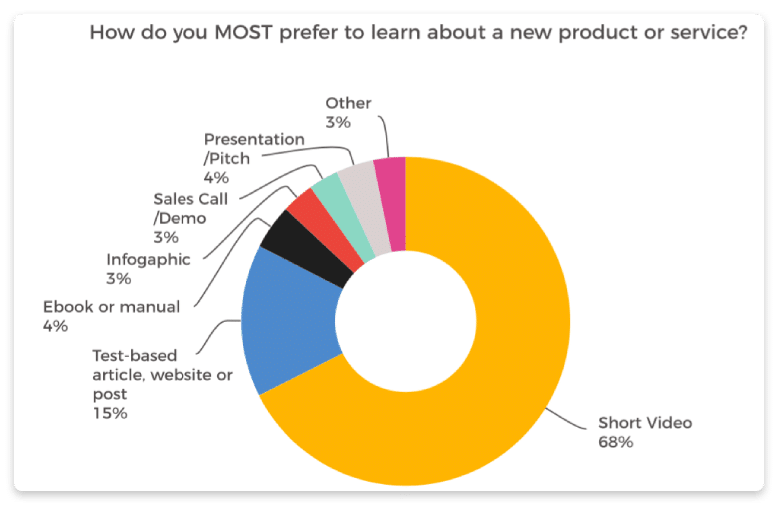
Source: www.snov.io
Vidyard
Vidyard is an online video platform that allows you to increase leads, accelerate your pipeline and delight your customers.
Using Vidyard for Your Sales Emails
Make your emails more interesting and engaging by adding videos within your body. With Vidyard, record and send videos in just a few clicks. This tool is perfect for busy sales professionals who are trying to personalize an email and connect with prospects.
Mailchimp
Mailchimp is one of the best known email automation tools out there! Email tracking tools in general are handy for you in B2B sales to track the opening rates, aka. the success, of your sales emails for instance.
Using Mailchimp for Your Sales Emails
Why using an email marketing tool for your sales emails you wonder? Mailchimp offers way more than the usual: profit from email tracking, email analytics and A/B testings for example.
Start Sending B2B Sales Emails That Will Delight and Convert Your Prospects
B2B sales emails can help you close that big deal. With the right strategy and approach, you can create personalized, engaging and accurate emails, efficiently, that are sure to WOW your B2B prospects and help you close that important deal.

